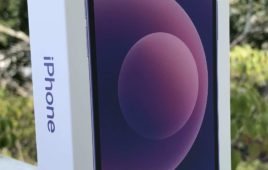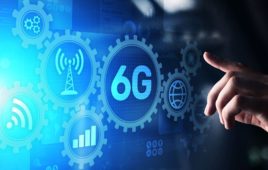LAS VEGAS—Apple has no public presence at the CTIA Wireless show, and might never come to the largest wireless show in the United States. But its shadow still hangs over this year’s event.
During the Smartphone Summit, a pre-show event Monday, Apple’s iPhone was brought up frequently because of the impact it is having on handset design, user interfaces and consumer expectations.
During an analyst panel at the summit, though, even the analysts couldn’t agree if the iPhone is a smartphone or not. The topic was broached by Bill Hughes, analyst with In-Stat, who says In-Stat uses the iPhone in its smartphone research. But Hughes said he’s not sure the iPhone qualified because it has been a completely closed platform. It was only recently that Apple decided to issue a software developers kit (SDK) that will allow outsiders to develop applications for the iPhone.
Hughes asked the audience at the panel how many believed the iPhone is a smartphone and only about one-third raised their hands.
Smartphones generally are defined as handsets with a high-level operating system that is open to developers. These include such platforms as Symbian, which is in about 70 percent of all smartphones because it is used by Nokia, and Microsoft Windows Mobile.
All the analysts agreed that the smartphone market, now about 10% of all handsets, is growing rapidly. Peter Cunningham of Canalys said his research shows there will be 241.1 million smartphones sold by 2010, a compound annual growth rate of 50.9%.
The smartphone market is different, though, according to region. Consumers buy most of the smartphones in Europe, the Middle East and Africa, Cunningham said, while most of the smartphones purchased in the U.S. are bought by professionals. That also means the U.S. market is dominated by the BlackBerry, while in Europe it is the Nokia Symbian S60 platform. The iPhone was 17.3% of the U.S. market last year but didn’t rate mentioning in Europe.
Cunningham mentioned that the iPhone, which is mainly a consumer device, likely will change the breakdown between consumer and enterprise in the U.S.
Andy Castonguay, director of consumer research for the Yankee Group, said he thinks carriers are going to start selling smartphones on an unsubsidized basis in the future. That’s because customer acquisition, which includes subsidy costs, are one of the largest costs for operators.
The shift to unsubsidized smartphones is going to happen because consumers are buying more of them, Castonguay said. Consumers are starting to see the value in smartphones and, as evidenced by the iPhone, are willing to pay a higher price for them.
Hughes mentioned that the average smartphone buyer in the U.S. downloads less than two applications to his or her handset, although that has grown, and that most of the downloaded applications are games.
Jonathan Goldberg, senior analyst with Deutsche Bank, said he has been following the retail sale of smartphones for years and noticed a major change during the Christmas season. Prior to that, he said, carrier retail outlets had a separate area in the store for smartphones. Over the holiday period he saw no smartphone sections in the stores. That’s because the smartphones are now being sold with the rest of the handsets and that they are being purchased not because they are called smartphones but for what they can do.
Goldberg said that kind of attitude change implied a kind of “death of the smartphone” because its not being marketed as a separate category.




